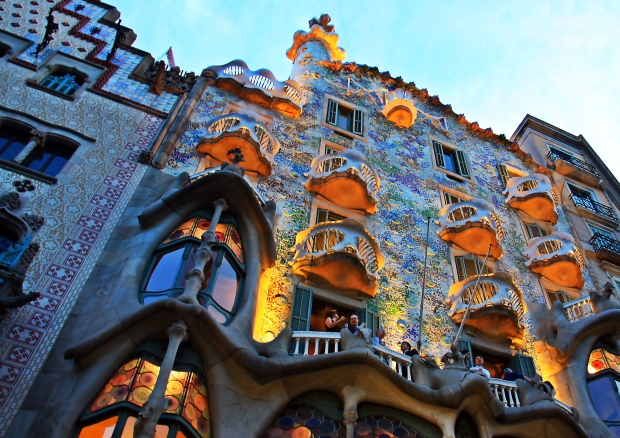Successful Nonprofit Arts Organizations, Like Successful Buildings, Depend on Successful Hierarchies
Level One:
Bricklayers. Carpenters. Stagehands. Electricians. Actors. Musicians. Painters. Singers. Writers.
Easy to find hacks. Difficult to find experts. Project-based.
Level Two:
Foremen. Department heads. Designers. Curators. Musical directors.
Small universe of successful ones. More skills required. Still project-based. Work toward a larger goal than Level One, namely a finished piece. Excellent collaboration skills.
Level Three:
Contractors. Directors.
Smaller universe still. Hire and manage Level One and Two (no requirement to perform at their skill level). Work toward a slightly larger picture, although still project based.
Level Four:
Architects. Executive/Artistic/General/Producing Directors.
Scarce universe of specialists. Determine “what.” Hire Level Three – several Level Threes, in fact. Understand projects, themes, and cohesion.
Level Five:
Owners. Boards.
Tiny, zealous universe. Hire Level Four. Determine “how.” Has personal stake.
Level Six:
The Community. The Mission.
Top of the hierarchy. Determines “why.”
Artists vs. Craftspeople – Nonprofit Arts Organizations Require the Former to Act as the Latter
Artists produce work from their creative souls, nurtured by a series of cultural, environmental, and psychological motivations. They create “a hat,” as Stephen Sondheim once wrote, “where there never was a hat.” Talented artists create from their current state of mind, without boundary.
Craftspeople produce work to fill a need. They possess a series of cultural, environmental, and psychological motivations which channel into art that produces a desired impact. Craftspeople create hats because they’re the best answer to a question.
All craftspeople are artists at their core. Many artists have no capacity to become craftspeople.
Nonprofit arts organizations require craftspeople. If the organization is more important than any artist, and the mission is more important than the organization, then employees on the organizational chart need to be, by definition, craftspeople divining an impact, not artists divining inspiration.
Talk to Me Like I’m 10: a Lesson in Long-Term Planning for Artistic Directors and Board Chairs
Does long-term planning cause a rift between your artistic director and those other people?
Does it cause discord between your board chair and those other people?
Seen all the time among arts charities: carefully (and successfully) executed annual development plans reduced to rubble after the board institutes a high-priced capital campaign. The capital campaign sucks up all in its path, causing 5 years of stakeholder repair. Indispensable Chair happy. Staff leaves.
Artistic directors substituting their taste for vision and their personal and professional relationships for core values. Idiosyncrasy obviates mission. Indispensable AD happy. Board leaves.
Both cases: company imperiled, stakeholders leaving.
Time to create an action plan, written at a 5th grade level. Make it about impact rather than income. Test the theory that your arts nonprofit is indispensable. Make sure that your most important stakeholders don’t leave.
Nonprofit Arts Board Members, Executive Directors, and Staffs: Has Your Board Been Assimilated? Have You?
Board membership for a nonprofit arts organization is a privilege. It requires commitment of time and money. It requires the urge to change things for the better.
It’s not for self-aggrandizement. It is not about being thanked endlessly. It’s not about banquets, galas, and being fed.
It’s a job.
Group thinking can be inspirational, but “groupthink” can poison your organization’s health. When your board only votes unanimously, for example, or the newly-approved mission is just reverse-engineered to current activities and reduced to pabulum, you may no longer have a board. You may instead have a Borg.
Borg members wait for orders. They don’t debate. Resistance is futile.
The Borg is powerful. Borg Presidents lead by autocracy. Borg Queens (often founders) drive staff away by insisting the organization’s activities revolve around them. Borg Drones atrophy.
Board or Borg?
Special 2016 “Alan Harrison’s Birthday” Edition: Pack Up the Babies and Grab the Old Ladies – And an Easy-To-Fulfill Wish List

I was born on May 14. Conceived on a hot August night. Neil Diamond would’ve been proud. He was old enough to have a kid then, so…who knows? Brother Love? Are you my papa?
From him, I want flowers.
From you, I want (this is your cue):
- A 137-word card. ( <–Yes, that’s a link.)
- Share your favorite 137 Words post with your social network (that’s “share,” not “like”).
- To join a great company with a great mission. In Seattle.
- Health for The Kid.
- Guidance for The Kid.
- The love of my life to be happy, fulfilled, and curious. You know who you are.
- The ability for you to guide your favorite nonprofit to safety, security, and success.
- Brilliantly measurable missions, better than you believe you’re capable of.
- Complete, successful execution of those brilliant new missions.
- Pie, not cake.
Artists and Non-Offensiveness: The Tyranny of Over-Sensitivity, Feelings, and Participation Trophies

There’s a troubling trend. There’s an absurd unwillingness to offend that seems pervasive among arts creators.
Not that creators are creating “Pleasant Art,” per se. Writers and artists are creating lots of work that is designed to make audiences uncomfortable. Which is good. The work may be about single issues and not terribly complex, but it’s good.
However, there are too many artists raised in atmospheres where everyone wins, even when they lose. In the name of inclusion and self-esteem, they live in a world where, like toddlers, “feeling bad” is simply unacceptable.
They believe they’re special.
To these artists:
- You are not special.
- You do not deserve success.
- Sometimes you lose.
It’s what you do with that information that defines you.
If you believe that nobody should ever have hurt feelings, you’re not doing your job.
Arts Organizations: 137th Post, 137 Thanks, and 137 (of Other People’s) Words That Guide Inspiring Leaders
“We must reject the idea — well-intentioned, but dead wrong – that the primary path to greatness in the social sectors is to become “more like a business.” Most businesses…fall somewhere between mediocre and good.” (Collins)
“If a man does not keep pace with his companions, perhaps it is because he hears a different drummer. Let him step to the music which he hears, however measured or far away.” (Thoreau)
“People don’t buy WHAT you do, they buy WHY you do it.” (Sinek)
“When they say things like, we’re going to do this by the book, you have to ask, what book? Because it would make a big difference if it was Dostoevsky or, you know, ‘Ivanhoe.'” (Anderson)
“‘To be is to do.’ (Socrates) ‘To do is to be.’ (Sartre) ‘Do be do be do.’ (Sinatra)” [Vonnegut compilation]
How You Can Solve Diversity With Your Nonprofit Arts Organization!
You can’t.
Arts organizations challenge, reflect, and engage. They don’t solve.
And remember, race is only one small bit of cultural diversity, not all of them. Just as the opposite of love isn’t “hate,” but “indifference;” the opposite of diverse isn’t “white,” but “homogeneous.”
I read a political blog recently about the Democratic Party presidential race. What troubled me were these words:
“What I’m crossing my fingers for is that in ten years or so we’ll get… a young,
charismatic democratic socialist who runs for president. (Preferably this
candidate would be a woman or a non-white person or, ideally, both.)”
Isn’t that parenthetical statement just as intolerant as one where “not” had been inserted after “would?”
Diversity isn’t only about race or gender or any of myriad other categories. It’s about power, shared equally, with specific impact.
Arts Organizations: What is Your Art? Is it “It?” Is it a Picture of “It?” A Report of “It?” None of the Above?

45 years ago today, February 9, an earthquake happened. I was shaken out of bed and looked out the window just in time to see a brick chimney fall on Dr. Prince’s new 240Z. That’s what happened to me.
We turned on the television to see films about the Van Norman Dam — in danger of bursting. I saw that through a lens.
The next day’s LA Times had the front-page story, “DAY OF DISASTER — Quake Leaves 42 Dead, 1,000 Hurt; Periled Dam Forces 40,000 to Flee.” I read that report.
The racing results, as always, were in the sports section. A square box on the front page said so. Horse racing is a popular entertainment. I didn’t care.
Is your art happening to your constituents? Is it through a filter? Is it second-hand? Or is it entertainment? Only one is personally meaningful.
If You’re _____________, Then Your Nonprofit Arts Organization is Probably Unsustainable (with apologies to Jeff Foxworthy)
- not paying your executive director because s/he is independently wealthy and actually donates 6 figures to the company;
- working 70 hours/week every week and see nothing wrong with that;
- hiring part-time employees and expecting them to work full-time free of charge;
- of the belief that your employees are less important than your equipment or your building;
- insisting that anyone besides your marketing director is the final word on your marketing;
- keeping your artistic director away from donors because s/he doesn’t know how to interact with them;
- in the mindset that any of your people are more important than any other of your people;
- playing “Dialing for Dollars” to meet your payroll;
- arguing that “keeping the base” is more important than expanding the audience, while…
- thinking that you can do both;
- sweating a little right now after reading this post.
Organizational Health Can Be Measured by the Number of Donors Who Don’t Have to Give to Your Arts Organization
How many non-board (or non-ex-board) members give to your arts organization?
How many non-staff members?
How many non-parents (if you do activities that include children)?
How many people who don’t attend your gala or other special event?
How many people who refuse donor benefits?
In other words, how many people donate simply based on your mission, programming, and activities; or by trusting a stakeholder of your mission, programming, and activities without expectation of a return?
Count the households of donors who donated all on their own. If the number is small, create a special campaign to draw them in, even if the donation is a simple $50. And thank them – they’re giving for no reason at all, except for unconditional love.
Ultimately, the health of your organization is measured by the number of those who unconditionally support it.
More on Charities and Families: Find a Way to Answer “NO” to Form 990, Part VI, Line 2
“XYX YXYXYXYX (WHO SERVES AS GENERAL DIRECTOR AND ARTISTIC DIRECTOR, CEO) AND XXX XXXXXXXX (WHO SERVES AS EXECUTIVE DIRECTOR – DEVELOPMENT AND MARKETING) HAVE A FAMILY RELATIONSHIP”
Their two combined salaries (excluding payroll taxes) to total budget: 6.0%.
Their two salaries to all salaries: 12.7%
These two employees to all 406 employees: 0.5%
Ratio, these two employees’ salaries to all employees’ salaries: 25-1
Current year surplus/(deficit): ($3,239,641)
Are your decision-makers married or in some family relationship? For a for-profit company, that’s fine. Family businesses and for-profit nepotism are mostly fine.
But charities, owned by the community and answerable to its constituents, are not family businesses. And when they act irresponsibly, like the above arts organization, it’s a travesty that negatively affects the whole industry.
Because now we have to convince supporters that this won’t happen to their donation.
Arrogance, thy name is YXYXYXYX.
The Creation of Art: Diamonds and Great Art Come from Tension and Pressure
Artists don’t work alone. They require collaborators.
A script isn’t a play. A score isn’t a symphony. A scene isn’t a painting. Choreography isn’t a dance. A libretto and score isn’t an opera.
And a vision isn’t an arts charity.
For any piece of art to be considered finished (and viable), a team is required. Playwrights, composers, choreographers, visual artists, and arts charities may be the ones who create artistic launching pads, but art, like space exploration, requires a slew of equal partners. Among those: directors, performers, designers, interpreters, tools and toolmakers, and audiences. All partners create tension. And that’s good.
No single artist deserves immunity from collaborative pressure. A piece of true art isn’t done until it’s done. Not before. Not after. The immutable pressure of the finish line makes the race exciting, meaningful, and artistic.









